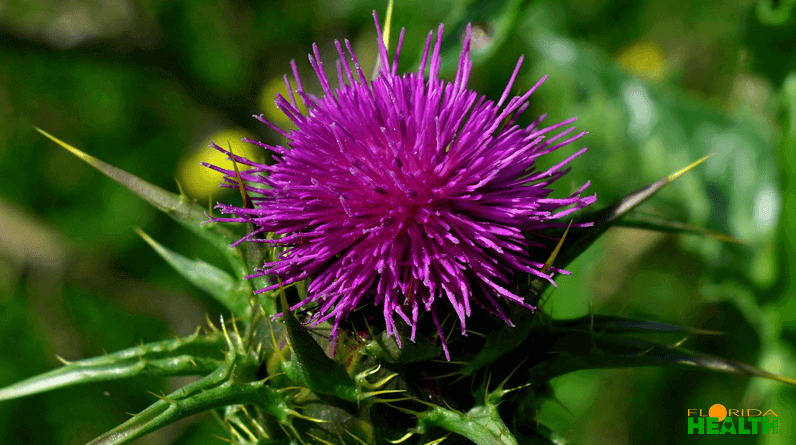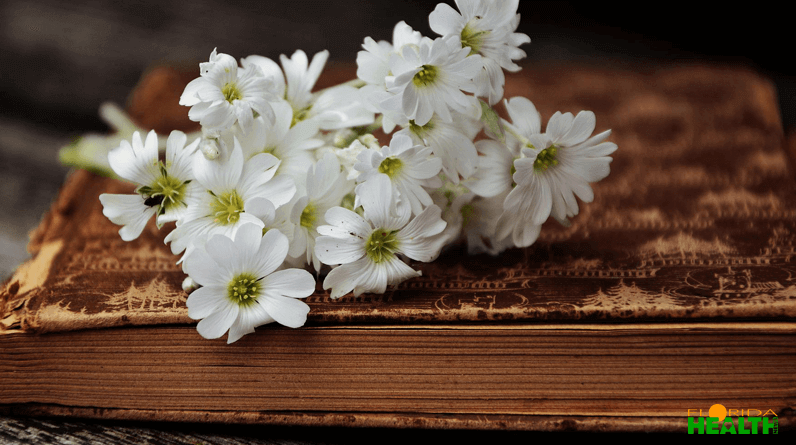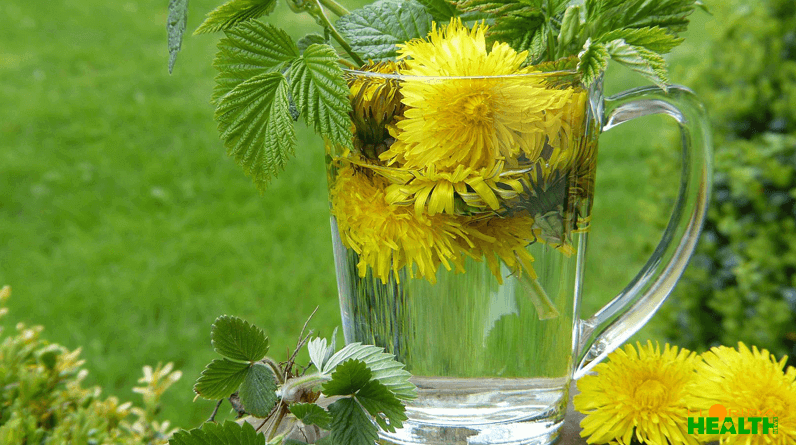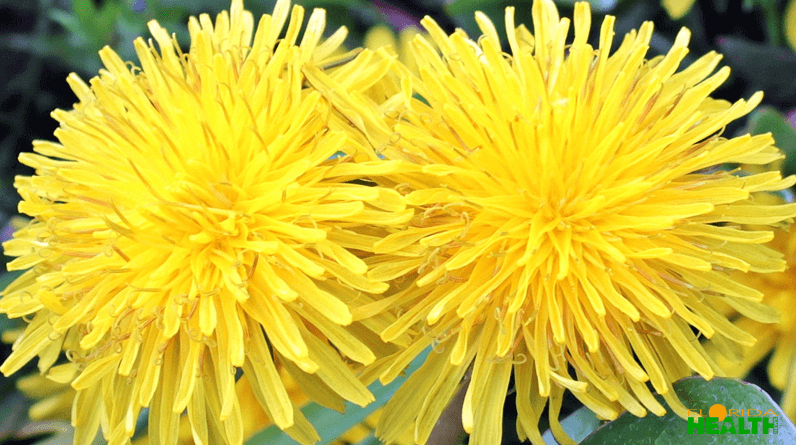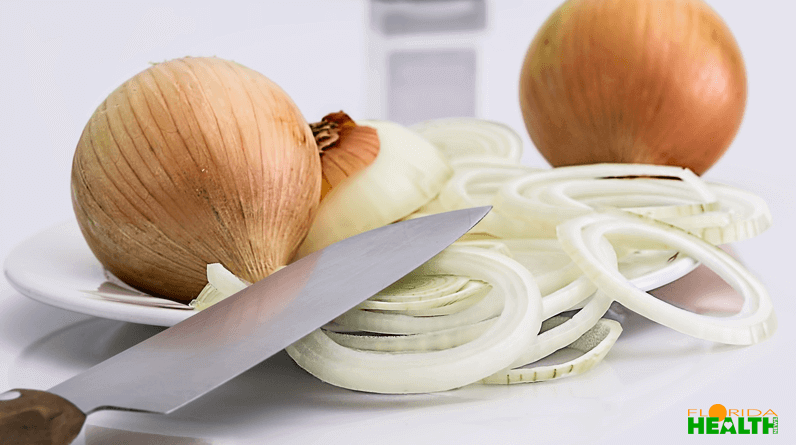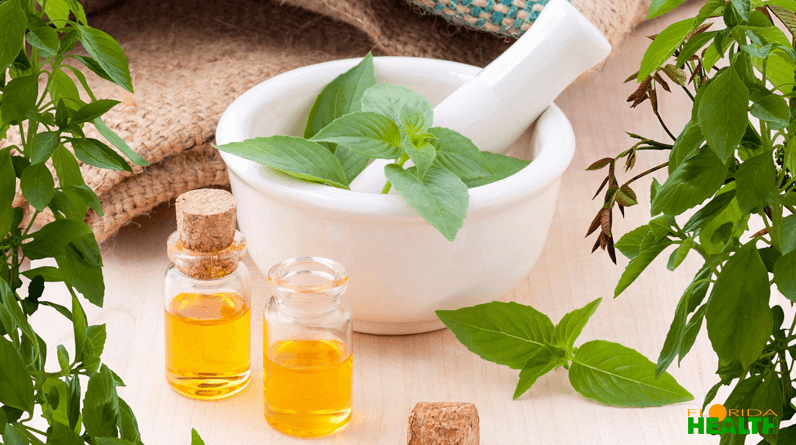
What Is Phytotherapy?
The term phytotherapy is derived from ‘phytos’, which means herb and ‘therapeia’ which means treatment. Phytotherapy is the professional and scientifically based form of ancient herbal medicine. It uses plants and herbs in a standardized form to promote or maintain health. Phytotherapeutics are medicines that contain as ingredients only plants, parts of plants or plant materials or combinations thereof, in a raw or processed state.
The definition reads: “Medicines that as active ingredients only contain plants, parts of plants or plant materials or combinations thereof, in a raw or processed state”. According to this definition, therapeutic use of isolated plant substances (e.g. curcumin, morphine, digoxin, galantamine, taxol) explicitly does not fall under phytotherapy.
Phytotherapy is used in various naturopathy methods as well as on a limited scale in the regular context. Much phytotherapeutic knowledge is based on centuries of preserved and passed-on use. From this knowledge, many single medications have been developed, for example, digoxin and reserpine. Within pharmacognosy, scientific research is done into the medicinal efficacy of herbs and herbal extracts. Various pharmaceutical companies are investigating herbal medicines from non-Western cultures in order to discover new medicines.
The History
It has been known since time immemorial that certain plants can have a medicinal effect and have been used for just as long. And phytotherapy is one of the oldest forms of medicine with which man has tried to cure his diseases. As far as we know, the earliest written sources date back more than 5000 years and clay tablets have been found in Mesopotamia, for example, describing the prescription of herbal medicines. In the Middle Ages, monasteries had the task of caring for the sick, growing medicinal plants, applying new herbs, and recording existing knowledge.
However, these primordial medicines had (and do have) disadvantages:
- The composition and quality of the raw materials vary, which makes precise dosing difficult.
- Vegetable raw materials are often not available fresh all year round. Preservations, such as drying, can change the composition and effect.
- The complex composition increases the risk of side effects.
With the advent of phytochemistry, it became possible to isolate the active substance(s) from the plant extract and to standardize the plant drugs.
In 1985, the World Health Organization estimated that nearly 80% of the population in developing countries was dependent on herbal medicine because of poverty and the insufficient availability of modern medicines.
The active substance in many drugs in modern medicine originally comes from plants, for example, Digoxin, codeine, aspirin, colchicine, morphine, vincristine, taxol, and yohimbine. Sometimes the substance is now produced in the laboratory. Some drugs are just chemical derivatives of plant substances.
At the moment we live in a time where hardly any value is attached anymore to what has been proven experimentally for centuries and to the developed knowledge that has been passed on from generation to generation. Through the centuries, the application of medicinal herbs has provided a wealth of information, which has led to a very high level of reliability and effectiveness. Fortunately, the scientific basis for phytotherapy has been greatly strengthened in recent years. Research is increasingly providing more and more evidence for demonstrable efficacy.
Natural vs Processed Use
If the whole plant or plant part is used, as in phytotherapy, natural harmony is maintained. Studies have shown that the substance(s) to which the medicinal effect is attributed are more potent in their original form (the herb) than in pharmacy where the substances are isolated, which means that the mutual controlling and regulating effect between the substances is lost.
To date, it has not been possible to analyze the mutual cooperation of all the substances present in a plant. Current research provides a new wealth of information and shows that the applications of herbal medicine are more up-to-date than ever. It is generally known that bee-phytotherapy uses only mild medicines to restore health. When an herb naturally contains toxic (poisonous) substances, the concentration of the medicine will be adjusted in such a way that the effect is effective and mild.
Phytotherapeutics have a number of advantages:
- Little or no side effects
- Not addictive
- Used alongside regular medication to reduce side effects or to lower the medication (in consultation with your doctor)
Chemical Composition of Phytotherapeutic Agents
The chemical composition of phytotherapeutic agents of the same name can vary widely and depends on, among other things:
- Correct identification of the plants used.
- Genetic differences between plants of the same species.
- Growth conditions: influence soil type, fertilization, microclimate, and weather conditions.
- The moment of harvest: (St. John’s wort, for example, has the highest hypericin content just before the plant flowers.)
- Processing, storage, and transport: some substances disappear after harvesting, and others are caused by fermentation, for example, extraction method, solvent, and temperature.
- Preparation determines to a large extent the proportion of the substances contained in the phytotherapeutic product, depending, for example, on its solubility in water, alcohol or oil.
For phytotherapeutic medicinal products, the harvested and dried material must meet the standards of the Pharmacopoeia, for example, a minimum content of volatile oil, flavonoids or saponins must be present.
Methods of Preparation
Herbal remedies can be made and used in many different ways. The chemical composition of these preparations can vary considerably, even if they are made from exactly the same plant material.
- Native preparation: if only the pure, fresh plant material is used.
- Press juice: the juice is obtained by squeezing out the fresh plant material (leaves, flowers, fruit, or roots), whether or not cut and/or mixed with water. Press juice must be consumed soon after production because its shelf life is very short. This can be prolonged by heating (in commercially available juices this is done via UHT), but valuable enzymes can be inactivated.
- Herbal powder: powder made by first grinding and then pulverizing dried herbs (usually in a mortar). Nowadays, plant material is sometimes cooled with liquid nitrogen and then finely ground in order to prevent the decay of important contents. The advantage of this method of preparation is that no heat is released when the plants are crushed so that the active ingredients are retained.
- Macerated: a “cold” extract in water at 15 to 25 degrees Celsius. Maceration in water is mainly used with herbs containing many mucilages (such as horn clover, bream or flaxseed), because they lose their effectiveness when heated. It is also used with plants that release pungent substances when heated or boiled. The time it takes to make a macerate can vary from minutes to even weeks. A digerate (digeratum) is made in the same way, only the temperature of the water is 35 to 45 degrees Celsius.
- Macerated in glycerine, alcohol, oil or any other solvent also occur, but are less common.
- Only glycerine- and alcohol-based macerates (glycerine macerates) are used in gemmotherapy because the young plant material (buds and shoots) used for gemmotherapy dissolves best in them.
- Herbal oil is made by letting herbs macerate in vegetable oil for three weeks and then sifting it off. Sometimes this process is accelerated by heating the oil. When a herbal oil is mixed with an alcoholic tincture, an herbal balm is created. A well-known example is carob oil, made from St. John’s wort and garlic oil.
- Syrup: infusion of (usually) fresh plant material that may macerate for a few weeks in sugar syrup and is then sieved off. Sometimes infusions, decoctions, tinctures or plant juices are mixed with the sugar solution and heated until everything is dissolved. Sometimes honey is used instead of sugar syrup. Well-known examples of medicinal syrups are thyme syrup, which is a well-known remedy for coughing, and fennel syrup.
- Tincture: an infusion of mostly fresh (but sometimes also dried) plant material in a mixture of water and ethanol. The alcohol percentage is usually 40-60%, in some cases even 90%. Tinctures are usually produced according to the prescription of a pharmacopeia.
- Liquid extracts: infusion of mostly fresh (but sometimes also dried) plant material in a mixture of water and alcohol, whereby part of the alcohol is removed by filtration or distillation. The remaining alcohol then acts as a preservative. The alcohol percentage of liquid extracts is, therefore, lower than that of tinctures, making the plant material more concentrated.
- Desiccant extract: extract of plant material in a solvent medium (e.g. water, alcohol (ethanol), acetone, CO2 or hexanol) where the solvent is completely evaporated. A nebulisate is a special form of a drying extract, in which the extract is nebulized and the nebulized extract is dried in hot air during descent.
- Essential oil: the highly concentrated volatile oils from plants. Usually, it is extracted by steam distillation (e.g. peppermint oil), but in the case of citrus fruit, it is extracted by cold pressing. In aromatherapy, essential oils are used therapeutically, but essential oils are sometimes also added to massage oil.
- Herbal vinegar: an extract of plant material in vinegar. The acetic acid helps to extract active ingredients from the herbs and also contributes to preservation.
- Herbal distillate: an infusion of plant material in alcoholic beverages such as wine or gin. The alcohol does extract the contents, but the extraction is often less than that of tinctures. Also, the shelf life is less than that of tinctures. Examples: herbal wine, and herbal liqueur.
- Ointment: an ointment is prepared by mixing plant material (e.g. juice, extract, or tincture) with a fatty substance, usually vaseline or lanolin.
- Compresses and plasters: Compression bandages are used, among other things, in sports injuries, to combat edema. In dermatology, it is used to improve blood circulation in cases of venous insufficiency and open legs. A special type is the pull-plaster. This is a plaster that has been prepared with certain substances (e.g. turpentine, pull ointment, mustard, or camphor oil) and that can speed up the discharge of pus in case of skin infections and boils.
Extracts
In the preparation of extracts, the basic material is concentrated, which means that more plant material is needed than is present in the final preparation. The ratio between the amount of plant material originally present and the extract is expressed in the ‘drug-extract ratio’. This ratio can be high: the most popular Ginkgo biloba extract in the world (EGb761) contains 50 times the concentration of the Ginkgolides naturally present in ginkgo leaves.
When the content of one or more content substances (usually the assumed active substances) is guaranteed, one speaks of a standardized and standardized product. Standardization of phytotherapeutics takes place in order to maintain the natural variation in the content of phytotherapeutics while still offering some therapeutic stability to practitioners.
In the case of standardization, it is important that not only the concentration of one or more ingredients is guaranteed, but that all procedures, from sowing to the final product, are recorded in the protocol so that they are always carried out as uniformly as possible. The aim is to obtain a product that is as reproducible as possible and as uniform as possible in terms of composition, even between different production batches, including ingredients whose contents are not guaranteed.
Herbal teas, infusions, or tisane: the following preparation methods can be distinguished here:
- Infusion: the prescribed quantity of plants or mixture is thrown into boiling water, and let soak for 5 to 10 minutes.
- Pouring: When pouring, the plant parts concerned are poured over with hot water. Usually, the plant material is allowed to soak for about 5 to 10 minutes while stirring occasionally. Depending on the temperature of the water and the duration of the infusion, the components present dissolve in the water. In the case of herbs with essential oils, the infusion should take place undercover in order to prevent the loss of these volatile components as much as possible.
- Boiling (decoct): the harder or tougher parts of the herb (woody parts, bark, roots) are brought to a boil with water and it is customary to boil this mixture for about 5 to 10 minutes. The mixture is then sieved and drunk hot or cold. Decoctions can only be made from plants that do not lose their effectiveness even when heated.
- Extended infusion: Half an hour with water from 90 – 100 degrees Celsius. As enzymatic and oxidative influences break down the active ingredients of aqueous preparations relatively quickly, they should be consumed immediately after preparation.
Bioactive Contents and Classifications:
The bioactive contents of plants that have a positive effect on the human body are also called phytonutrients. Phytonutrients can be classified into different substance classes. Among the known active substances, whose properties and medicinal effects are important, are terpenes, bitter substances, alkaloids, tanning agents, glycosides, saponins, mucilages, minerals, and vitamins.
- Bitters. The term “bitter substances” stands for a large group of chemically very different, nitrogen-free, oxygenated plant components that are responsible for the bitter taste of many plants.
- Simple bitter substances are used to a large extent as a stomach remedy, to promote the secretion of digestive juices in the mouth, stomach, and intestine. These substances are found, for example, in the various stomach bitters. Typical examples of dry bitter substances are the bitter substances of the gentian family (Gentianaceae), of the thousand-daughter herb (Centaurium spp.), sage (Salvia officinalis), and Absintalsem (Artemisia absinthium).
- Sharp bitter substances stimulate the heat and/or pain receptors. These include, for example, the substances in ginger (Zingiber officinale) or Spanish pepper (Capsicum sp..). They increase the release of digestive juices (saliva, gastric juice) and are therefore used for flatulence and stomach complaints.
- Alkaloids: are nitrogenous, organic compounds with a complex structure. They are often highly active substances found in plants that we refer to as “poisonous”, because they act on the central nervous system and can have a calming, analgesic, but also tingling, stimulating, or invigorating effect. Alkaloids include, for example, morphine and codeine, which are found in the milk juice of the bulb poppy (Papaver somniferum), and atropine from wolfskers (Atropa belladonna), caffeine in the coffee plant (Coffea spp.) and nicotine in tobacco leaves (Nicotiana tabacum). In high doses various alkaloids are toxic.
- Tanning agents: Tannins are complicated, nitrogen-free compounds (polyphenols). Their most important property is their astringent (= astringent) action on the skin tissues. Therefore, tanning agents are used in inflammatory processes that reveal themselves through redness, swelling of the tissue, and increased secretion. A contraction of the surface causes the tissue to compact; the redness decreases and the penetration of the tanning agents into the mucous glands slow down the secretion. In addition, tannins have to a certain extent antiseptic, disinfecting, and somewhat localized anesthetic properties.
Externally, herbal preparations containing tannins are used as mouth and gargle water. Internally, tannin-containing herbs serve for the treatment of diarrhea. In the past, tanning agents were used in the tanning of animal skins. Plants containing tanning substances are the tea plant (Camellia sinensis), the oak (Quercus spp.), and blueberries (Vaccinium myrtillus).
Glycosides
These substances, also called glucosides, are glucose compounds that give sugar to the cleavage product with acids, bases, and enzymes. The remaining compound (aglycone) determines whether or not the glycoside is active. There are different types of glycosides, some of which work strongly and are certainly not harmless (think for example digitoxin). A number of examples with specific properties:
- Isothiocyanate glycosides (mustard oil glycosides), have a stimulating effect on digestion in case of anorexia and dyspepsia. Plants with mustard oil glycosides include shepherd’s pouch, white mustard, real spoonbill, horseradish, and white watercress.
- Amygdalin (Blue acid) glycosides, like the poisonous amygdalin in bitter almonds.
- Anthraquinone glycosides (emodin glycosides) are derived from 1,8-dihydroxyanthraquinone (dantron, chrysazine), the oxide groups are not at one core. They occur in rhamnus, rheum, cassia, and aloe species. Spores also occur in other plants of the knotweed family. They are colorectal relaxants, which are resorbed via the small intestine and excreted in the large intestine. There they have a strong laxative effect by preventing water resorption on the one hand and reflective stimulation of the colon peristalsis on the other hand.
- Rubiaglycosides are derived from 1,2-dihydroxyanthraquinone or 1,3-dihydroxyanthraquinone (e.g. alizarin), the oxide groups are located at one core only. As the name suggests, they occur in Rubia tinctorum (Meekrap), but some other plants from the Rubiaceae (star-leaved family) also contain these substances, albeit to a lesser extent. Examples are yellow mulch straw, cleavers, and lady’s bedstraw or yellow bedstraw.
- Salicin and saligenin: glycosides with analgesic, antipyretic and anti-inflammatory properties.
Saponins have the property to foam strongly in combination with water. On the basis of their effect on surface tension, they have the character of soap. Directly introduced into the blood circulation, saponins act as a strong poison and lead to the dissolution of the red blood cells and to organ damage. Large quantities cause cramps and after a short period of time respiratory paralysis. In the gastrointestinal tract, saponins are hardly absorbed, and therefore, when taken by the mouth in low doses, they are non-toxic. In phytotherapy, plants containing saponins are administered as a urine floating agent (birch leaves), as well as for their secretion and expectorant effect in case of bronchitis (primrose). The root of the primrose (Primula spp.), ivy leaf (Hedera helix), (birch leaf (Betula spp.)), licorice (Glycyrrhiza glabra), and white horse chestnut (Aesculus spp.) contain saponins.
Mucilages: Mucilages, which contain the mucus cells of the plants, include starch, gum, and pectin. These are primarily used to treat inflammations of the mucous membranes (stomach, intestine, respiratory tract). The mucous substances form a protective layer on the inflamed mucous membranes. Among the plants that are rich in dry mucilages are hemest root (Althaea officinalis), flea seed (Plantago psyllium), linseed (Linum usitatissimum), and narrow plantain (Plantago lanceolata).
Organic acids: Many plants, usually in their fruit, contain certain organic acids, such as malic acid, oxalic acid, tartaric acid, and citric acid.
Resins: Resins are non-volatile substances formed in the bark and wood of tropical tree species in particular. When resins dissolve in volatile (essential) oil, it is called balm. Resins contain acid and therefore have a pungent effect on the skin. Resin-containing dry substances include myrrh and incense. Both are disinfecting and anti-inflammatory and are often applied to inflammations of the skin, throat, intestine, or joints.
Minerals: Various minerals occur in very small, but no less important, quantities in plants. These include sodium, potassium, calcium, magnesium, sulfur, silicon, iron, manganese, copper, zinc, phosphorus, bromine, and iodine.
Vitamins: A vitamin is a micronutrient used by organisms such as humans in coenzymes. Because vitamins are not consumed, humans need very little of them. Organisms can not or only to an insufficient extent make their own vitamins. Some vitamins can be produced by the body itself, examples are vitamin B3 (from tryptophan) and vitamin D (in the skin by exposure to UV-B radiation).
Forms of Administration
- Vapor baths or inhalations
- Oral forms of administration (capsules, tablets, etc.)
- Footbaths
- Spray
- Covers
- Compresses
- Herbal ointment
- Herbal cream
Research and Development
Research into the efficacy of herbs as a medicine is complex[5] because very often several components (each plant is a mixture of active substances) contribute to the desired effect. There is no money to be made from patents on natural products and many current patent medications are already modifications or isolation of plant substances, which makes investing in them very risky for big pharma companies.
Risks and adverse effects
Every substance has a certain degree of toxicity and can have both desired and undesired effects on the body. The fact that a substance has been extracted from nature will not make it more or less healthy.
Two Examples:
Ex1. St. John’s wort increases the sensitivity of the skin to the sun. St. John’s wort gives many interactions with various medications. The medicines with the most important interactions are immunosuppressive drugs, drugs used in HIV infection, digoxin, certain sleep-inducing drugs, a drug against cardiac arrhythmias, the contraceptive pill, anticoagulants, and theophylline.
Ex2. In 1990 a lawsuit was started in Belgium against doctors, pharmacists, and importers of Chinese herbs, after a hundred or so women were told that their kidneys were affected by “incurable interstitial fibrosis”. The doctors in question had prescribed these women a cocktail of synthetic medicines and Chinese herbs to lose weight. The herbal mixture included a plant species of the genus Aristolochia containing aristolochic acid, which in itself is highly toxic to the kidneys (nephrotoxic) and carcinogenic. It is prohibited in some European countries to trade plants containing aristolochic acid or its derivatives.
In several countries, government agencies are warning about various Ayurvedic products because they were found to contain too many toxic heavy metals such as lead, mercury, and/or arsenic.
Further Reading and Research:
https://en.wikipedia.org
www.who.int/
www.ncbi.nlm.nih.gov/
www.sciencedirect.com
https://cpha.tu.edu.iq
www.digitallibrary.health.nt.gov.au
www.gardeningknowhow.com
www.ncbi.nlm.nih.gov
https://www2.chemistry.msu.edu
https://en.wikipedia.org/wiki/Mucilage

Carl Riedel is an esteemed online researcher and writer, specializing in the intersection of technology and wellness. As a member of the International Association of Therapists, Carl brings a unique perspective to his work, skillfully integrating insights from therapy and digital trends. His articles help readers navigate the complexities of the digital age with an emphasis on promoting mental and emotional well-being.



